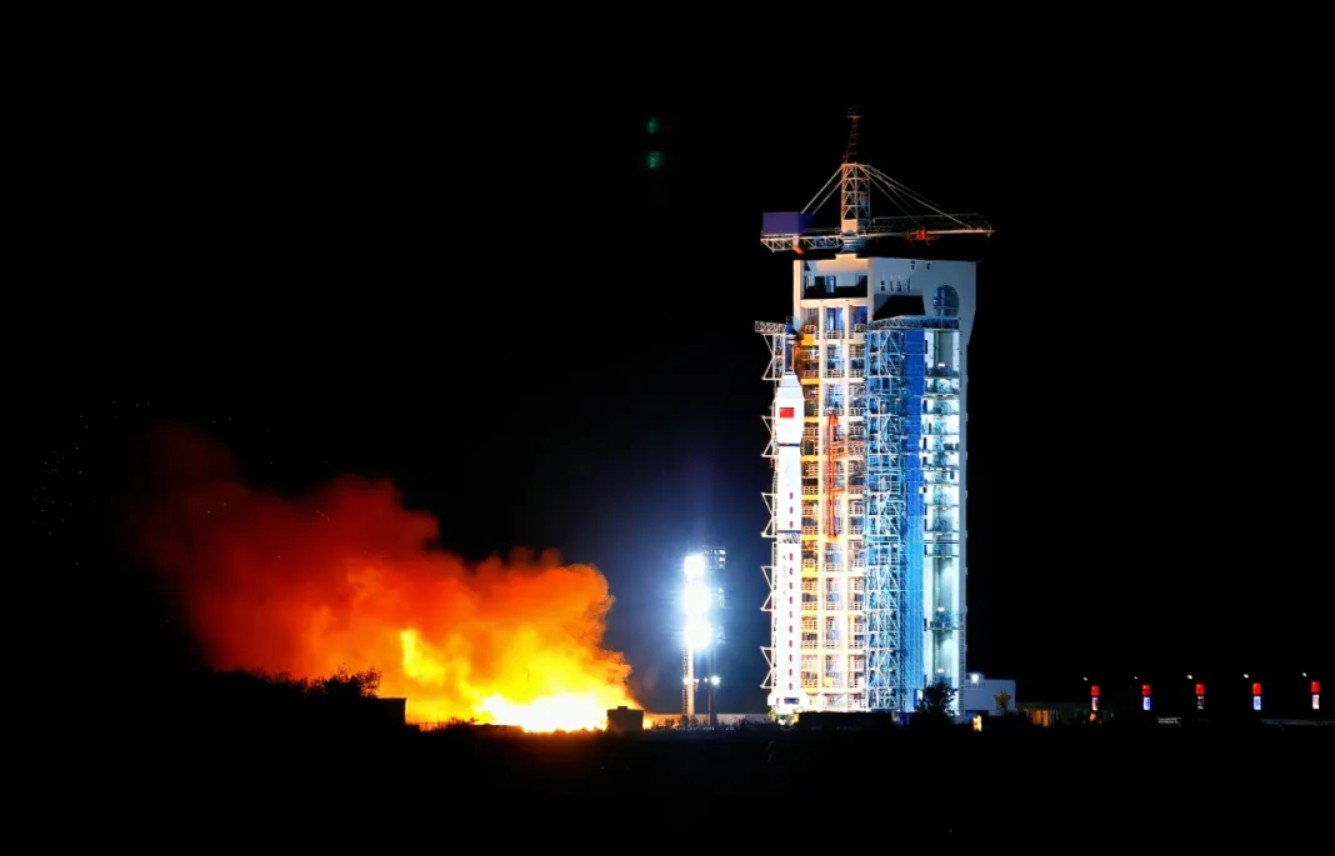China has significantly advanced its satellite capabilities through a series of recent launches aimed at expanding its Internet of Things (IoT) network, enhancing broadband services, and bolstering its weather monitoring systems. These developments reflect China’s commitment to advancing its technological infrastructure and increasing its competitiveness in the global space sector.
The first of these launches occurred on September 27, 2023, when a Long March 6A rocket successfully lifted off from the Taiyuan Satellite Launch Center at 8:40 a.m. Eastern time (12:40 UTC). This mission marked the deployment of the 11th batch of the Guowang broadband megaconstellation project, which aims to deploy nearly 13,000 satellites in low Earth orbit. The China Aerospace Science and Technology Corporation (CASC) confirmed the launch success approximately two hours later, announcing that this latest launch would increase the number of operational Guowang satellites to 86. The project is seen as a strategic response to similar initiatives like SpaceX’s Starlink.
With a target of having 400 satellites in orbit by 2027, China has accelerated its launch schedule. Seven launches have taken place since late July, showcasing a rapid increase in activity aimed at achieving its ambitious satellite deployment goals.
Just a day prior, on September 26, 2023, another Long March rocket, this time the Long March 4C, successfully launched the Fengyun-3H weather satellite from the Jiuquan Satellite Launch Center at 7:23 p.m. Eastern (23:23 UTC). This second-generation polar orbit satellite, weighing 2,300 kilograms, is equipped with nine advanced instruments designed for meteorology, ocean and ice monitoring, and climate analysis. According to the World Meteorological Organization, the addition of Fengyun-3H will enhance China’s capabilities in weather prediction and monitoring.
In a separate launch on September 24, 2023, a Jielong-3 solid rocket lifted off from a mobile sea launch platform in the Yellow Sea. This mission successfully deployed 12 satellites for the Geesatcom constellation, an IoT project aimed at providing low-bandwidth connectivity across various regions. This launch completed the first phase of the Geesatcom project, which consists of 64 satellites. Geespace, the space arm of automaker Geely, has expressed intentions to further develop this constellation, targeting over 5,000 satellites to enhance broadband connectivity and precision navigation services.
Additionally, on September 15, 2023, a Long March 2C rocket conducted a launch that included four satellite Internet technology test satellites. These satellites are believed to be related to the Guowang project and were placed into circular orbits at an altitude of approximately 800 kilometers. This mission involved collaboration between CASC and commercial satellite firms like GalaxySpace and Minospace, indicating a trend towards increased partnership between governmental and private sectors in China’s space endeavors.
Overall, these launches have brought China’s total orbital attempts in 2023 to 58, closing in on the national record of 68 launches set in 2024. Of these, 56 have been successful, with the only setback occurring in August when a Zhuque-2E rocket from commercial outfit Landspace failed. Despite this incident, Landspace is preparing for a flight test of its larger, reusable Zhuque-3 rocket.
The upcoming launch from China is anticipated to be a Long March 2D rocket mission from Jiuquan, scheduled for early September 29, 2023, with details about its payload yet to be announced. As China continues to expand its satellite infrastructure, the implications for global connectivity and technological development are profound, marking a significant chapter in the competitive landscape of space exploration and satellite technology.
